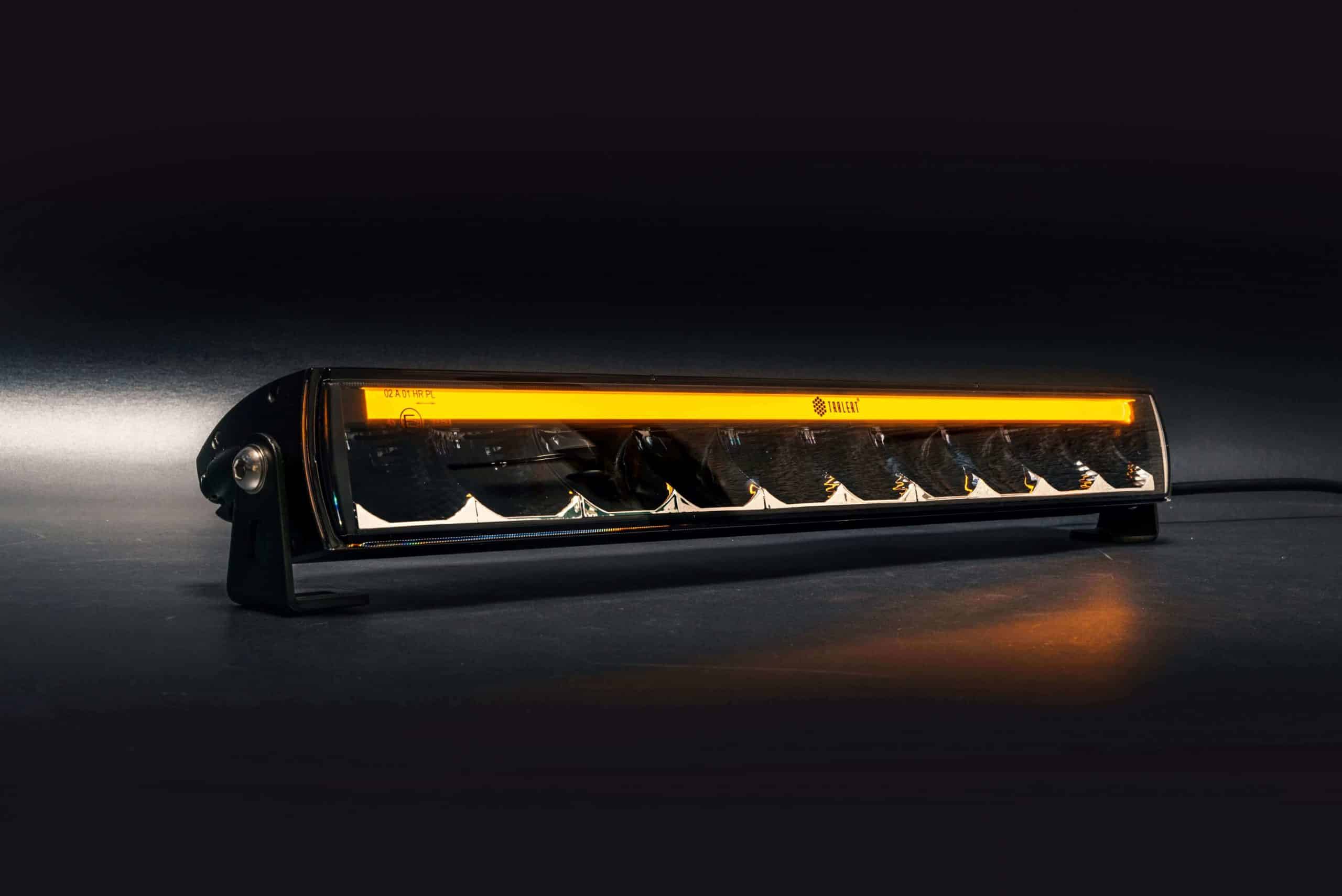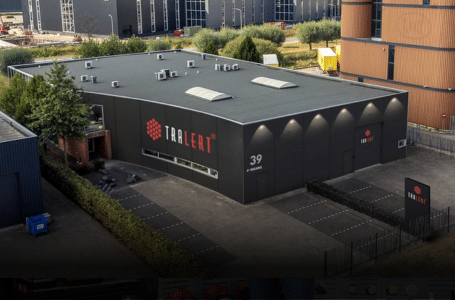How does LED Lighting actually work? Below you will find an explanation of how LED lighting works. What is the meaning of the abbreviation LED and where is it used? The other types of lighting are also discussed. How does LED lighting compare to other types of lighting? What are the advantages and disadvantages of the different types of lighting?

What is the meaning of the abbreviation LED?
Before we start explaining LED lighting, it is important to know the meaning of the abbreviation. The word LED is an abbreviation from the English language. LED stands for "Light Emitting Diode". LED is an increasingly common form of lighting. The first forms of LED lighting were used as early as 1927. The first time LEDs were used on a large scale was in 1962. LED lighting is becoming more common because it has several advantages. These advantages will be discussed later.
Other types of lamps
There are, of course, many different types of lighting. The best known forms of lighting are the light bulb, fluorescent lamp, halogen lamp and the LED lamp. Each lamp produces light in its own way. These different ways of producing light have different advantages and disadvantages. Below, you will find information about the different forms of light.
Light bulb
First of all, the incandescent lamp is discussed. The incandescent lamp is actually known to everyone. An incandescent lamp emits light by means of a filament. Electricity heats up the filament. The heat causes the filament to emit light. A major disadvantage of this form of lighting is that, in addition to light, the bulb also produces heat. 90% of the current is converted into heat. Only 10% of the current is actually converted into light. An incandescent lamp therefore costs quite a lot of energy because a lot of energy is lost. The function of a lamp is to provide light and an incandescent lamp only does this with 10% of the energy it receives.
In addition to the heat that the light bulb produces, there is another disadvantage. The incandescent lamp is in short supply. Since 2013, it has been illegal in the European Union to import or produce incandescent bulbs. This was done because the incandescent lamp wastes so much energy, especially compared to other forms of light. An incandescent lamp can also be dangerous. It can catch fire. The glass bulb around the filament ensures that no oxygen can get to it. Fire can only start when it has oxygen. When the glass bulb is broken and oxygen can reach the filament, the light bulb will burn within a second.

Fluorescent lamps
The term "TL lamps" is used to refer to fluorescent lighting. "TL" comes from French and stands for "Tube Luminescent." TL lamps are elongated lamps that emit light through electricity and gases. These lamps contain chemical gases inside the glass tube. These gases are toxic to humans, so always handle TL lamps with care. When electricity is passed through the gases, it produces light. The gases primarily produce ultraviolet light. This light is converted into mostly visible light by a phosphor coating on the glass. The TL lamp will still emit some of the ultraviolet light, which can be harmful to humans as it can trigger chemical reactions.
Halogen
In terms of operation, the halogen lamp is very similar to the incandescent lamp. Electricity is passed through a filament and the heat produces light. Of course, there are differences between halogen and incandescent lamps. In the information about the incandescent lamp, you have read about the function of the glass bulb. When oxygen reaches the filament the bulb burns. In the light bulb, the glass bulb is a vacuum. With the halogen lamp, the glass bulb is filled with a gas. Halogen is added to this gas, hence the term halogen lighting.
Another difference is that the halogen lamp has been further developed in comparison to the incandescent lamp. Halogen lighting has a longer life and emits more lumens. This means that the actual light that the lamp radiates is more. It is also possible to indicate small differences in colour with halogen lighting. The warmer the filament of a halogen lamp, the whiter the light becomes. Therefore, different colours are possible.
Halogen is therefore already a better option than the incandescent lamp, as it uses energy more efficiently and provides more light. Even so, the halogen lamp still loses part of its energy in heat.
How does LED lighting work?
Finally, LED lighting, how does LED lighting work? The meaning of the abbreviation LED became clear earlier. LED stands for "Light Emitting Diode". But with only the meaning of the abbreviation, you don't know much about LED lighting.
An LED is an electronic component (semiconductor). It emits light when a current passes through it. But how does it work exactly? It starts with the electricity that passes through a diode (diode comes from the abbreviation for LED). The atoms in one of the materials are boosted by the electricity to a higher energy level. The higher energy level is actually too high for the atoms. The atoms will try to release the energy to get back to their previous level. The atoms can donate the energy to another material within the LED. The energy transfer between the atoms and the material gives off light. That's how LED lighting works.
LED lights do not become warm because almost all of them are equipped with cooling ribs. The cooling fins ensure that the LED lamp does not become too hot and thus lose energy. This also contributes to the long life span of an LED lamp. LED lights are available in many different colours. This is made possible by using different materials.

What is LED lighting used for?
LED lights are used in many different ways. In fact, it is impossible to imagine life without them. You will find LED lighting in vehicle lighting, for example, but also in electrical appliances and Christmas lighting. In other words, LED lighting is extremely versatile. LED lighting also offers many possibilities for the future. Possibilities that we now think are perhaps impossible.

Advantages and disadvantages of LED lighting
Every form of lighting has its advantages and disadvantages. Incandescent lamps and halogen lamps lose a lot of energy to heat and fluorescent lamps can be harmful to humans. LED lighting has no major disadvantages. The only thing that can be said is that LED is slightly more expensive to buy compared to other types of lighting. But the total costs are lower. Because LED lighting needs to be replaced less often, the costs are lower in the long run compared to other types of lighting.
The purchase price may be a small disadvantage, but that does not outweigh all the advantages that LED brings. LED lighting uses energy much more efficiently, which means that the lamp lasts much longer. An LED lamp can last up to 35 times as long as a halogen lamp. A halogen lamp is already the advanced incandescent lamp. Also, an LED lamp cannot become extremely hot. LED lighting is also available in several colours. LED lighting is also very versatile in terms of shapes and light patterns. Another advantage is that the lighting is more resistant to peak voltages.
For more information on the advantages and disadvantages between different types of lighting, check out our other blog called Halogen vs LED, the differences.
LED lighting from TRALERT®
TRALERT® has been a specialist in LED vehicle lighting for years. TRALERT® offers a comprehensive range of lighting solutions for various types of vehicles. Within our range, you will find lighting for trucks, commercial vehicles, trailers, trailers, excavators, 4x4 vehicles, forklifts, and vehicles in the agricultural sector. You can equip your entire vehicle with the necessary lighting using the lamps available in the TRALERT® range.
Some lighting is mandatory to use, such as LED rear lights by TRALERT®. Other lighting that is not mandatory but can be a valuable addition includes LED interior lighting. Of course, there are many more different types of lighting in the assortment. TRALERT®'s range includes:
- Rear lights
- LED marker lights
- LED side marker lights
- LED emergency light bars
- Beacons
- Warning lights
- Interior lighting
- Work lights
- LED licence plate lighting
- LED bars
- Driving lights
- Flashers
- Reflectors
View our complete range of LED lighting here.

Benefits of TRALERT®
TRALERT® LED vehicle lighting also attaches great importance to fast delivery. TRALERT® has 90% of its products in stock, which means we can deliver quickly. If you place an order before 15:00 we will ship it the same day. This means that you will receive your order the very next day. TRALERT® also offers a long warranty period. The guarantee differs per product, but each lamp has at least a 2-year guarantee. Many lamps have a longer guarantee period. This can even extend to a lifetime.
Furthermore, TRALERT® LED vehicle lighting places great importance on fast delivery. TRALERT® has 90% of the products in stock, which means we can deliver quickly. If you place an order by 3:00 PM, we will ship it the same day. This means you will have the order at your doorstep the next day. TRALERT® also offers an extended warranty period. The warranty varies by product, but you have a minimum of 2 years warranty on every lamp and it can go up to a lifetime warranty.
If you have any questions about LED lighting or any of our products, please do not hesitate to contact us.
Frequently asked questions
What is the abbreviation for LED?
The word LED is an English abbreviation and stands for "Light Emitting Diode".
How does LED lighting work?
It starts with electricity passing through a diode. The atoms in one of the materials are pushed by the electricity to a higher energy level. The higher energy level is actually too high for the atoms. The atoms will try to release the energy to get back to the old level. The atoms can donate the energy to another material within the LED. The energy transfer between the atoms and the material emits light.

